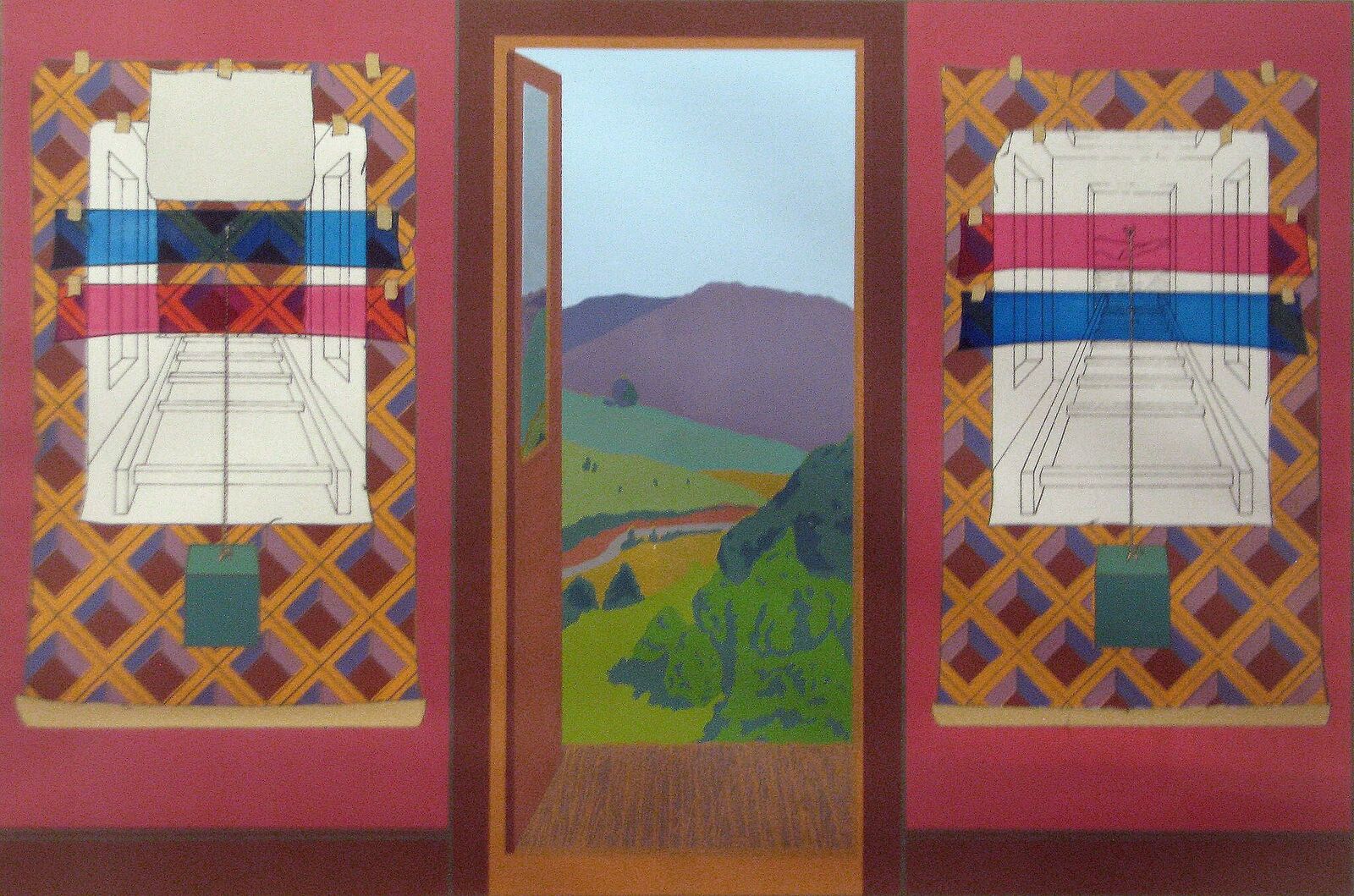“The role of the artist is to see what is in the world today,” Robert Rauschenberg famously said.
And George Bireline, perhaps the best-known North Carolina artist of the late 20th century, certainly lived by that belief.
Thirty-five of his paintings and serigraphs currently are featured in a retrospective showing at the Lee Hansley Gallery in downtown Raleigh. The works range from Joseph Albers-like color fields to large abstractions.
“There were several different stages to his work,” says gallery owner Lee Hansley. “Whatever was going on in the country he could do it – and he did do it.”
Much of his work, especially the 1960s color field paintings, was architecturally based. There are windows, doors, and rooms, all greatly simplified. Later he would move on to explosions of images and colors. “He was never a true abstract expressionist, but he was an abstractionist,” he says.
Bireline, who lived from 1923 to 2002, came to North Carolina 1950 after earning his BFA from Bradford University in Peoria, Ill. He started out as a fulltime set designer for the Raleigh Little Theater, then began teaching at N.C. State’s College of Design during its heyday, from 1956 to 1986.
Along the way he earn his MFA from the University of North Carolina at Chapel Hill, and became involved with Bucky Fuller and James Fitzgibbon in Synergetics, their firm built around industrial architecture and the geodesic dome.
His work today hangs in the North Carolina Museum of Art, the Metropolitan Museum of Art, the Hirshhorn, The Nasher in Durham and the Smithsonian Museum of American Art. But the largest collection of his work resides at the Virginia Museum of Fine Art in Richmond, Va.
“Sydney and Frances Lewis from Best Products were his number one patrons – and they were major collectors,” he says. “They would buy right from the studio before his paintings were finished.”
That would surely be a ringing third-party endorsement, if Bireline actually needed one.
For more, go here.
[slideshow id=1830]


